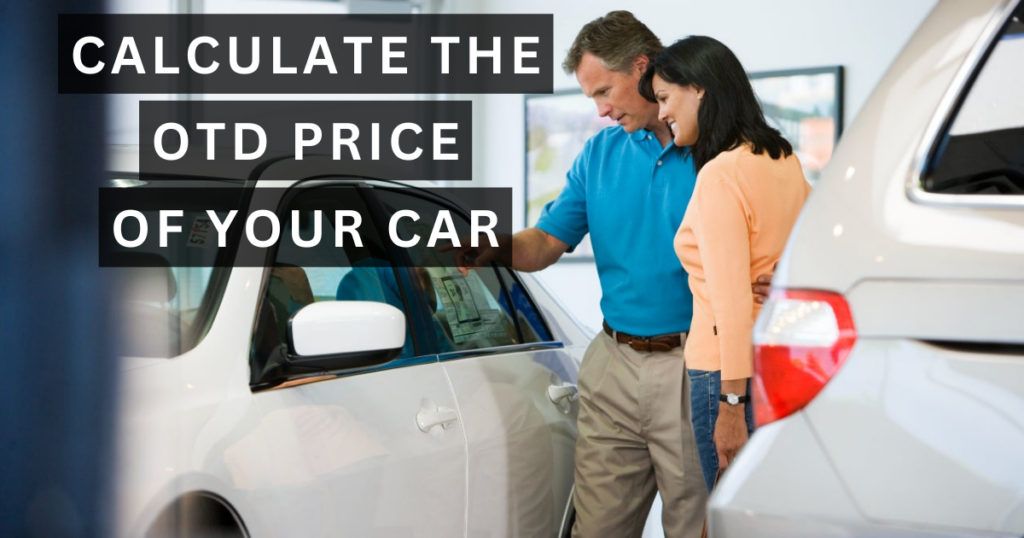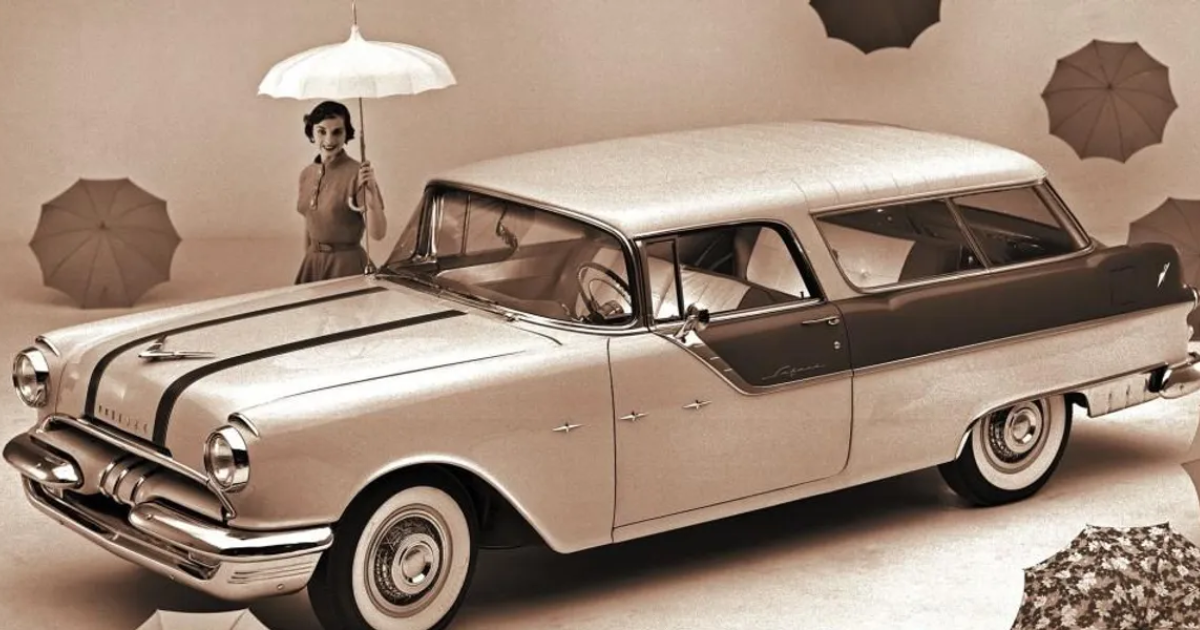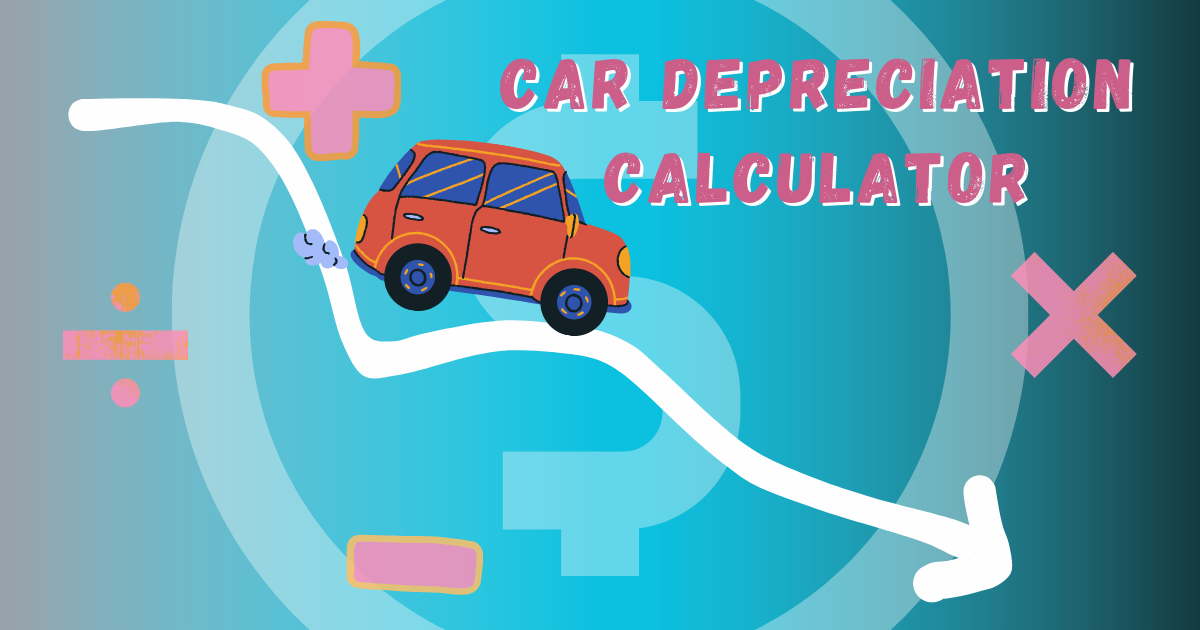
Many consumers who have shopped for a car know that the sticker price may not be the final cost. The sticker price of a car can be lowered through bargaining, a trade-in, or a down payment. However, other costs like taxes and fees may increase the final total.
Out-the-door price refers to the cost of purchasing a vehicle and leaving the dealership. And it’s a must-know figure before you sign any sales contracts. The out-the-door pricing, as well as methods of haggling and planning ahead for the purchase, will be discussed in this article.
What Is Covered by the Out-the-Door Price?
The full price you pay to drive away with an automobile, which includes the sale price plus taxes and fees, is known as the out-the-door price (also known as the OTD price). When paying in cash, this determines the size of the check you’ll write or the amount you’ll put on your credit card.
It refers to the sum of money you will have to borrow if you are acquiring a car loan. When you ask for the OTD price, the salesman typically understands what you mean. After saying something to the effect of “besides the cost of the car, you will pay sales tax, Department of Motor Vehicles fees, and a doc fee, which is…,” a competent salesperson instantly reveals the fee.
You should be wary if a salesperson gives you an evasive response to your question regarding the out-the-door cost or claims it is difficult to determine this amount.
Before continuing with the car-buying process, ask the dealer what the out-the-door price is. To negotiate a price that is within your budget, it is essential to understand what is included in the OTD price.
Typically, the out-the-door cost includes:
- The cost of the car
- Title and registration fees (State-specific)
- Taxes (which differ in each state)
- Dealer fees (such as those associated with documentation, promotion, and new-vehicle destination)
- Additional dealer packages, gap insurance, credit insurance, or extended warranties
When determining the out-the-door price, the dealer may additionally include your down payment and trade-in credit (if you’re trading in a car).
The OTD Price Calculator

First, type the car’s selling price here. Then type in the state where you plan to register the car.
We’ll research your local taxes, title, and registration costs, as well as the projected doc fee in the background. The Out-the-Door Price Calculator will give you a realistic idea of how much your new vehicle will cost to buy.
Calculate OTD Price Using Formula
The following formula is used to calculate the Out of Door Price.
Formula
OTD=CV+ F+T
Where OTD is the Out of Door Price
CV is the total car value
F is the dealership fees
T is the taxes
To calculate an out-the-door price, sum together the total car value, dealership fees, and taxes.
Example:
The total car value: $12,000.
The dealership fee: $3,500.
The taxes: $3,000.
Finally, calculate the Out of Door Price using the formula above:
OTD = CV + F + T
Inserting the values from above yields:
OTD = $12,000 + $3,500 + $3,000 = $18,500.00
Out-the-Door Price vs MSRP
The manufacturer’s suggested retail price, or MSRP, is the sticker price that is frequently shown in large, bright numerals on a car’s windshield or online. But don’t fall for it! It’s considerably less than what you’ll pay for the vehicle.
The MSRP is a suggested price, as its name implies. The out-the-door price is typically more because the MSRP does not include taxes or fees. The out-the-door pricing should be determined using the MSRP as a starting point.
The Sticker Price Does Not Include Some Fees and Taxes
Naturally, buyers who see the car’s sticker price might assume that is the final cost without haggling. Sadly, the sticker price does not reflect the real cost of the car. The final purchase price will increase as a result of numerous additional expenses that purchasers will incur. What is excluded from the list price?
- Retailer fees
- Taxes
- Title fee
- Registration fees
All of these additional expenses are included in the out-the-door pricing. Unfortunately, a model’s out-the-door price might differ from state to state. The difference in taxes and fees is to blame for this. While some states do not impose sales taxes on vehicles, others do so at varying rates.
States may also set fixed costs for document processing (doc fees). However, in some states, the doc fees could significantly increase the final price of the automobile.
Out-the-Door vs Monthly Payments
So how does this strategy function if your primary concern is making your monthly payments? Most of us want to make sure the monthly payments are manageable because we rarely pay the full price of a car in cash. And it’s common for a vehicle salesperson to start off a price discussion by inquiring, “What do you want your monthly payment to be?” It’s simple to get caught up in that monthly-payment mindset.
However, if you solely concentrate on the monthly payments, you won’t be able to clearly see any add-ons or foresee how significant the doc fee will be. Despite this, it’s still crucial to understand what your monthly payment will be, especially if you’re leasing. To that end, be sure to request a quote that includes tax and registration fees.
By receiving pre-approved auto financing, you can prevent monthly-payment myopia. Then you can enter the dealership as a cash buyer and bring a check from your lender with you. You can determine whether the dealer’s financing is a better offer for you if you have preapproval as well.
The easier course of action is to bargain over the car’s price. It is also simpler to inquire about the out-the-door price, which will disclose your final car payment.
How Do You Bargain the OTD Price?
When you’ve decided on the automobile you want at the dealership, you’ll go to the finance department to arrange your payments and, if necessary, acquire financing. This is your opportunity to bargain.

Never bargain from the MSRP; always start with the out-the-door price. (Remember that the MSRP is typically far less than the out-the-door cost.)
When bargaining, ask the dealer to lower the OTD pricing. Don’t concentrate on each and every cost or line item. Focus on specific costs if the dealer’s revised offer still falls far short of what you are willing to spend.
To assist you in the event that this occurs, we have compiled a list of fees (some of which may be negotiable and others which may not).
These items may be negotiated:
- Documentation fee: This cost is incurred in processing the sale’s documentation. The documentation charge may be capped in some areas, but it can still cost you several hundred dollars or more.
- Dealer preparation fee: This fee covers the dealer’s expenses associated with cleaning your vehicle. Before you get in, an automobile should be clean, whether you’re buying a new or old one.
- Fee for transportation: A dealer may charge a fee for transporting the vehicle (for instance, from one dealership to another). Work on getting any transportation costs waived if the automobile is parked on the lot.
- Extended warranties or maintenance: Many automobile customers contend that supplemental dealer services like extended warranties and maintenance aren’t worth the cost. But if you do, try to work out a price that works for both of you.
- VIN etching: When purchasing a new car, the dealer may charge you a fee to etch the VIN into the windshield. The cost is typically negotiable. It ought to be present if you’re purchasing a secondhand vehicle.
Some potential non-negotiables are as follows:
- Taxes: Taxes cannot be discussed and are determined by municipal and state governments.
- Fees for title and registration: these are regulated by each state’s Department of motor vehicles (DMV) and are non-negotiable.
- Destination fee: Automakers charge dealers this cost to transport brand-new vehicles from the plant to dealerships. When you purchase a new car, the fee is typically passed on to you.
- Credit insurance and gap insurance are optional, but their costs are not negotiable.
Before signing a contract, make sure you are aware of and have a discussion about what is included in the out-the-door fee.
Conclusion
With a trade-in and a down payment, buyers may be able to negotiate a lower price for the car. To calculate how much they will pay, they must still factor in the additional expenses of the automobile. The monthly payments will not cover registration or title fees; these charges must be paid separately.
Buyers risk being hit with a hefty charge they didn’t budget for if they are unaware of their tax duties and don’t take these expenses into consideration. The cost of the car could increase by thousands due to sales tax. Use an out-the-door calculator to determine the true cost of the car so that potential purchasers won’t experience sticker shock when making the purchase.
FAQs
What is out the door price?
The overall price of the car is referred to as the “out-the-door price.” It is exactly what it says it is: the whole cash sum you must pay in order to receive the keys to the vehicle. This price frequently includes a number of extras, such as any costs related to the car that the dealer incurred.
What does MSRP for cars mean?
The MSRP of a car is its manufacturer’s suggested retail price. The specific factory options a car comes with determine its MSRP. The officially required Monroney label (or window sticker) of a vehicle for sale displays the MSRP.
Does the out-the-door price include interest?
Usually, no. If you’re financing, make sure to request that the figures be updated to include interest, as it’s possible to receive an out-the-door price from a dealer that does. To obtain the most accurate total, speak with your salesman to confirm that the out-the-door price reflects the approved interest rate and down payment.




